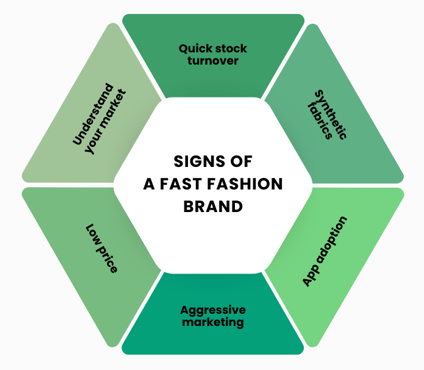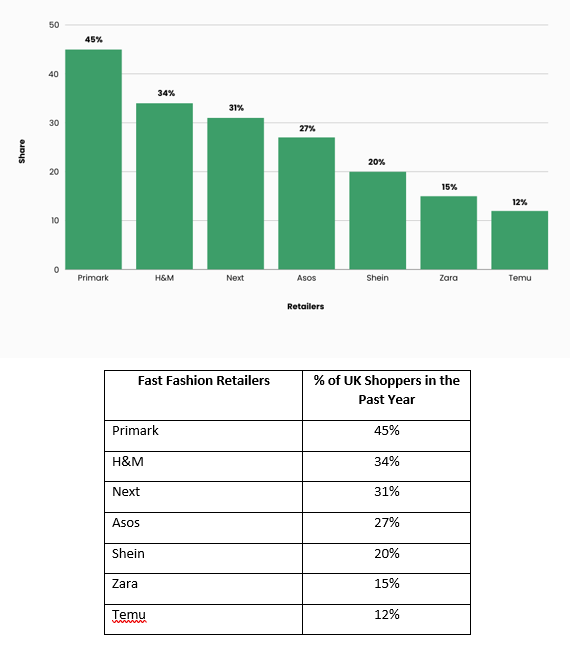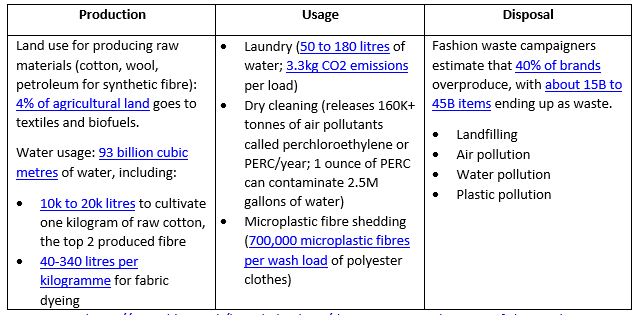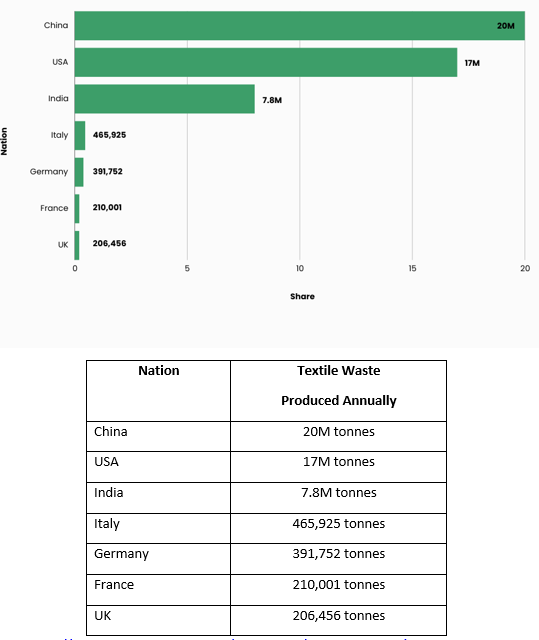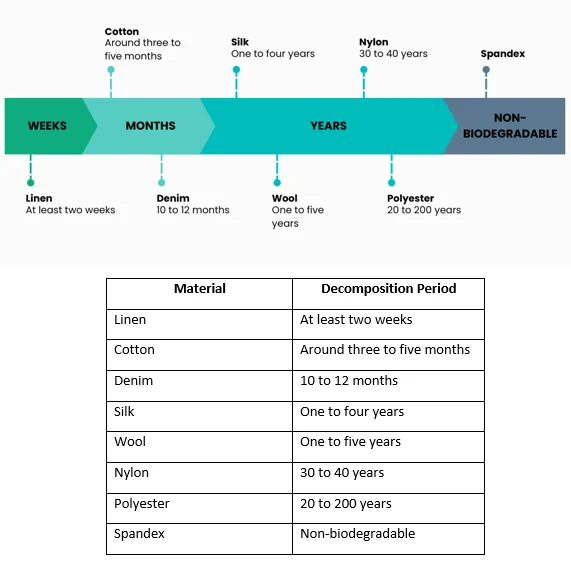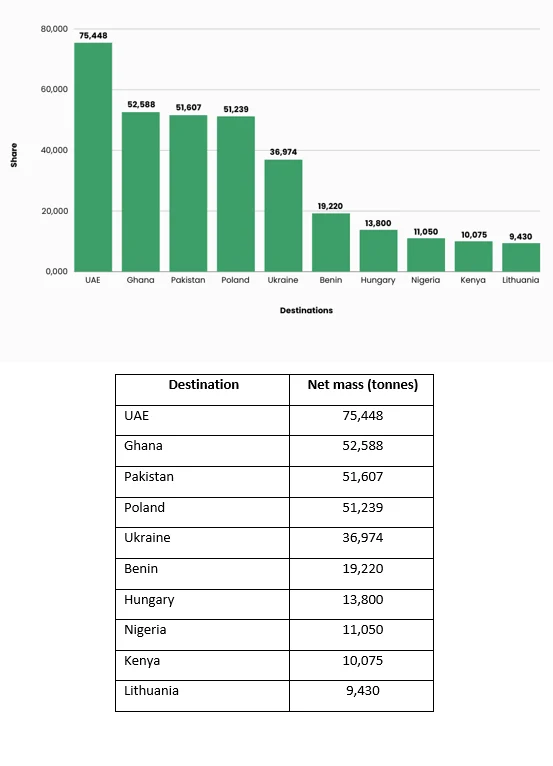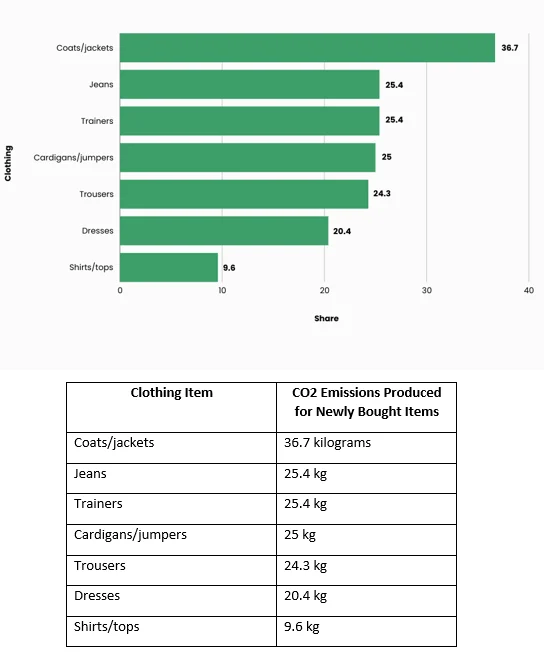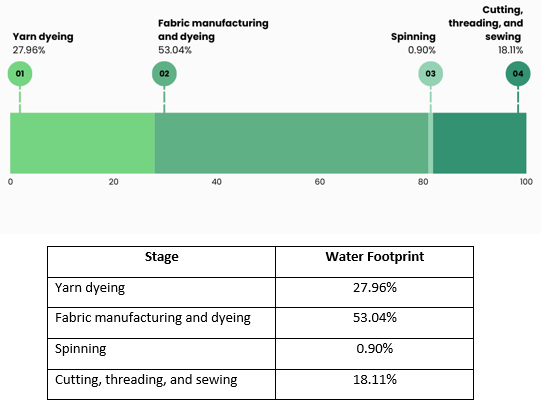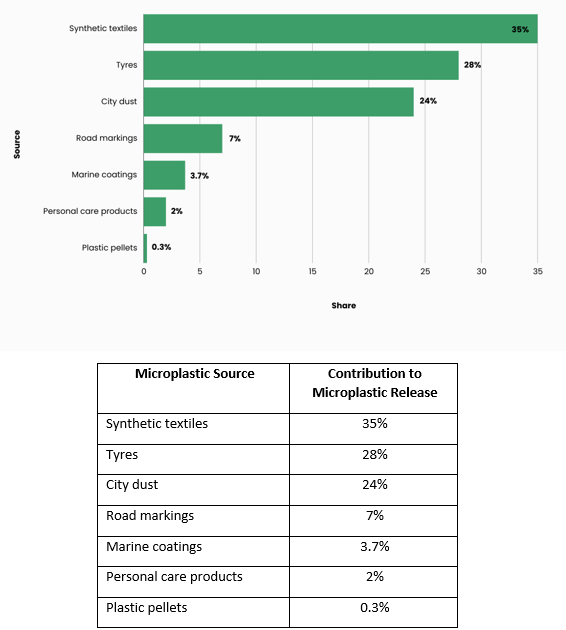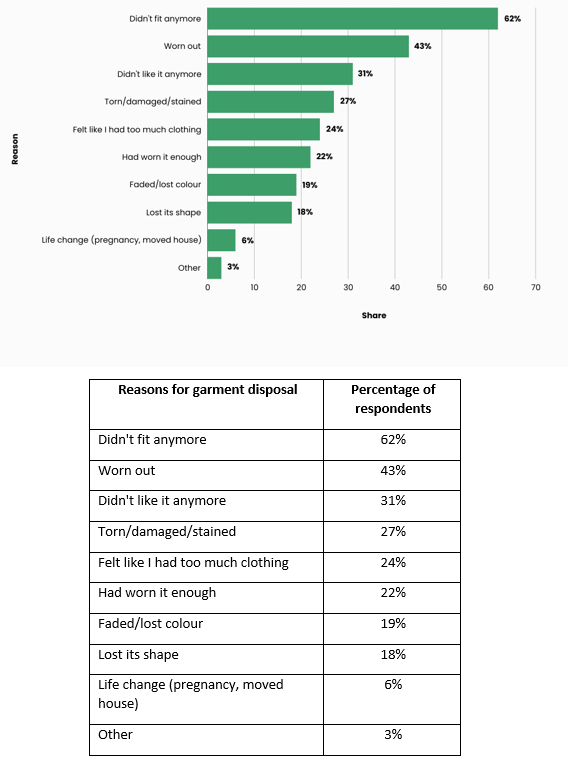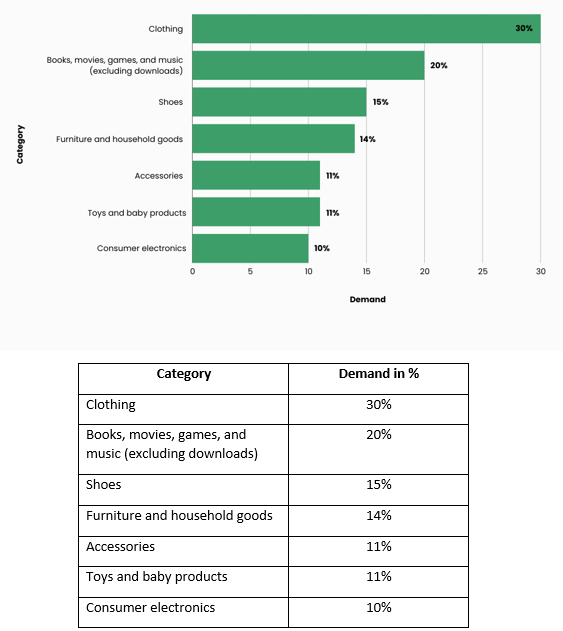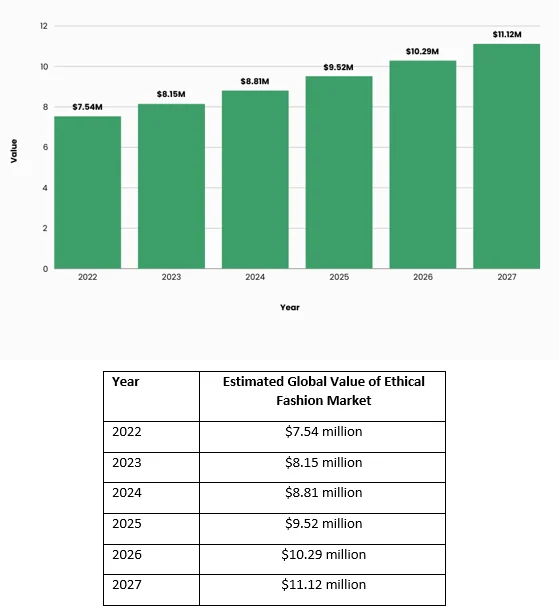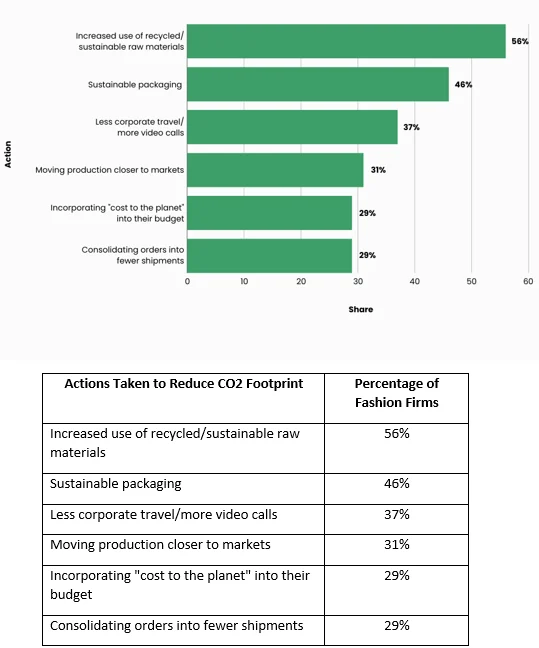Fast Fashion’s Environmental Risks & Tips for Reducing Impact
Fast fashion or the creation and sales of low-priced but trendy clothing has become popular for good and bad reasons. It can give consumers a new look at an affordable price, but it has put a heavy toll on the planet.
The term may have first appeared in the New York Times in the 1990s. However, Britannica traces the phenomenon’s origins to the 1970s when retailers in the West began outsourcing production overseas, particularly in Asia, where they could pay workers at lower rates.
Meanwhile, environmental advocates consider the emergence of the sewing machine and sweatshops in the 1800s as the starting point of the fast fashion model. Clothing companies built factories where manual workers received low wages for long hours in poor or even illegal conditions. Fast fashion gained momentum during the self-expression era of the 1960s. Since then, the thirst for the latest fashion began a vicious cycle with a devastating cost to the environment.
The overproduction wheel starts with manufacturers incentivising brands to order higher quantities in exchange for a discounted bulk purchase. Brands then encourage retailers to do the same, with contracts stating that stores can return unsold products.
Designers had typically designed two or four collections annually. Fast fashion changed that with the rise of “micro-seasons.” A collection could last as quickly as a week, resulting in 52 micro-seasons per year.
The result? A 10% contribution to carbon dioxide emission by clothing producers.
Signs of a Fast Fashion Brand
IBISWorld pegs the number of UK fast fashion businesses at 1,243, with revenues projected to rise at a compound annual rate of 1.5% to £10.9 billion until 2025. Meanwhile, Statista forecasts the global fast fashion market will be worth $185 billion by 2027.
But what makes a brand a fast fashion entity? Here are six signs to watch out for:
Quick stock turnover
A fast fashion brand rapidly and constantly introduces “new arrivals” or products and holds frequent sales. New items in different styles replace old stock instead of replenishing outlets with items that sold well. Brands use this technique to generate the urgency to buy for consumers who want to stay on-trend.
These garments also hit the shelves shortly after being seen on the catwalk or worn by celebrities. The strategy aims to entice shoppers to make repeat purchases until they buy more than they need.
Synthetic fabrics
Most fast fashion producers use inexpensive synthetic materials, such as polyester, nylon, rayon, or similar fabrics, instead of cotton or wool. Some products claim to be natural fabric but lack certification. The lower cost helps them manage costs for large-volume output.
Mass production
Loose threads and inconsistent stitching are typical signs of inattention to detail, just a few traits shared by mass-produced items. According to Business of Fashion (BOF), some companies, such as Shein and Temu, have developed large supplier networks that exclusively manufacture for them and deliver directly to consumers.
Low price
People may pay less for low-quality, cheaper fabric. However, such clothing can easily fade, lose shape, or sustain damage, forcing consumers to discard them early.
Aggressive marketing
Brands may bombard shoppers with SMS and email marketing messages upon purchase, besides employing social media advertising and influencer marketing to promote “limited-time” offers and flash sales.
App adoption
Fast fashion brands expand their customer base by leveraging mobile apps to sell products. Gamification (loyalty points and rewards) raises engagement and encourages loyalty. Moreover, companies can use shopper analytics for product design and selection.
Below are the most popular fast fashion brands based on UK shopper volume in the past 12 months as surveyed by BOF and McKinsey in 2023:
Top Fast Fashion Brands by UK Shopper Volume Over The Last 12 Months
How Fast Fashion Impacts the Environment
Fast fashion demands a high volume of environmental resources in every stage of the clothing life cycle. Its impact is in three phases: production, usage, and post-usage or disposal.
Sources: https://www.hhc.earth/knowledge-base/the-environmental-impact-of-the-textile-sector
Let’s take a closer look at how the clothing sector pollutes the Earth’s primary components: land, air, and water. But first, let’s establish what’s counted as clothing waste.
What Is Textile Waste?
Clothing waste includes any clothing items and manufacturing waste that’s thrown away, including the following:
- Manufacturing offcuts
- Misprinted goods
- Out-of-season and unsold items
- Worn-out/old workplace and school uniforms
- Old (unwanted, damaged, no longer fit) clothes
Royal Waste says the world produces 92 million tonnes of textile waste annually. Meanwhile, Business Waste lists the UK among the top contributors of such waste.
Top Global Textile Waste Producers and Their Annual Output (in tonnes)
Source: https://www.businesswaste.co.uk/your-waste/textile-recycling/fashion-waste-facts-and-statistics/
Pollution Caused by Textile Production, Use, and Waste
The clothing life cycle results in the following environmental damage:
Landfilling
Textile waste takes up about 5% of landfill space. Moreover, it takes a long time to decompose—up to 200 years, especially for synthetic fabrics.
Decomposition Periods of Fabric
Sources: https://www.businesswaste.co.uk/your-waste/textile-recycling/fashion-waste-facts-and-statistics/
https://hellojackalo.com/blogs/news/fabric-decompose
https://www.cottonique.com/en-ph/blogs/articles/how-long-will-it-take-for-fabrics-to-decompose
In the 2024 Textiles Market Situation Report by Waste and Resources Action Programme (WRAP), the non-profit shared its findings about the top destinations of UK’s used clothing:
Top Destinations for UK’s Used Clothing In 2024 by Volume
Source: https://www.wrap.ngo/sites/default/files/2024-04/Textiles%20Waste%20Hotspots%20Report.pdf (51/70)
During decomposition, textile waste releases methane, a greenhouse gas that absorbs more heat than carbon dioxide. At the same time, the process contaminates groundwater and soil with the “leachate” from dyes and other chemicals used in producing the fabrics. The toxic juices can pollute nearby streams, lakes, and marshes.
Air Pollution
Polymers that form the fibres of synthetic/plastic-based fabrics are chemical substances derived from petroleum. Synthetic fibre production takes up 1.35% of global oil produced yearly.
Research by Gumtree shows the carbon footprint for each newly bought clothing by type:
C02 Emissions for Newly Bought Items (in Kilograms)
Source: https://www.gumtree.com/info/life/p/life-advice/the-naked-truth-about-fashion-week/
Meanwhile, incineration or burning clothing in furnaces to produce electricity emits 785 kilogrammes of carbon dioxide for every tonne of textiles. Polyamide or nylon fabric and acrylics—used for gloves, boot liners, and activewear—release nitrous oxide. This gas is approximately 300 times more potent than CO2.
Water Pollution
Fabric dyes and treatments contribute to 20% of industrial water pollution. Factories use around 10,000 dyes and 8,000 chemical types for garment bleaching and brightening.
This pie chart on the water footprint of Bangladeshi textile production shows fabric dyeing takes up over half of the total water demand. The country is one of the world’s leading garment exporters.
Water Footprint by Stage in Bangladesh’s Textile Production
Source: https://www.mdpi.com/2073-4441/12/10/2760
Plastic Pollution
The spread of microplastic in the environment is closely tied up with water pollution. We already discussed earlier that washing synthetic clothing leads to microplastic shedding.
Sources of Microplastics and Their Contribution to Microplastic Release
Source: https://link.springer.com/article/10.1007/s11270-022-05715-5
Moreover, the European Environment Agency estimates that 200,000 to 500,000 tonnes of these microfibres penetrate the world’s marine environment yearly. Over 14 million of them have already settled into the ocean floor.
Social Implications of Fast Fashion
Fast fashion hasn’t only had profound effects on the physical environment. Its social impacts include harmful job conditions, poor consumer habits, and disregard for creative integrity.
Decline in local manufacturing
To cut costs, brands reduce the number of jobs in their geographic location and outsource clothing production to low-income countries.
Unsafe working conditions/exploitative labour practices
Overseas manufacturing plants may lack ventilation, and workers don’t have enough protection from the toxic chemicals they handle. Besides low pay, employees may not have access to healthcare and pension benefits.
Animal harm
Land and marine life are the innocent victims of environmental degradation due to dyes and microfibres from clothing production.
Throw-away culture
One style is as fleeting as the next in fast fashion, shortening the number of times clothes get worn. Business Waste reports that each Briton throws away an average of one kilogramme of textiles annually, reportedly Europe’s fourth highest. Meanwhile, WRAP’s latest data showed that the quantity of textiles discarded (1.45 million tonnes) was around the same volume of newly bought textiles (1.42 million tonnes).
In WRAP’s 2024 textile market situationer, the NGO cited data showing the top reasons Britons gave for discarding clothes:
Common Reasons Britons Discard Clothing
Source: https://www.wrap.ngo/sites/default/files/2024-04/Textiles%20Waste%20Hotspots%20Report.pdf (10/70)
Intellectual property theft
Fast fashion brands can rip off other brands’ designs. They either produce a replica of an item or copy a design onto another clothing type.
Tackling Textile Waste: UK and World Response
The good news is awareness and support for fashion sustainability have grown in the UK since the early 2000s. In 2012, 90 brands, retailers, recycling and reuse organisations, innovators, and academicians developed and signed the Sustainable Clothing Action Plan 2020 Commitment. The signatories included the sources of over 48% of national retail clothing sales. Its accomplishments include:
- A 4% reduction of clothing’s inclusion in household waste
- 102,000 tonnes of “improved fibres” or shifting from cotton to organic and recycled polyester or nylon sources
- 690,000 tonnes of clothing collected for reuse and recycling
This industry-wide movement has also cascaded among consumers. At the start of 2024, UK fashion brand Blakely surveyed 2,000 people nationwide about their clothing preferences. Although 60% of respondents admitted that social media influenced their style, 58% said they won’t be actively following 2024 fashion trends. Instead, the majority will be dressing for comfort (85%). Moreover, 75% of poll participants said they want to “buy better” by seeking quality over trendy items. Longevity/durability is a top factor that 77% of respondents say they’ll consider.
The Rise of Recommerce
Recommerce is gaining traction as a sustainable shopping habit. Clothing is the top-selling category in recommerce—or the reselling or renting of second-hand items.
Distribution of Demand for Second-Hand Items by Category
Source: https://www.statista.com/forecasts/997906/most-common-second-hand-purchases-by-category-in-the-uk
A Barclaycard Payments report pegs the clothing and accessories contribution to recommerce at £1.22 billion for 2023 alone. The majority of second-hand purchases come from millennials and Gen Z shoppers.
Circular Economy Gets Govt Support
In 2021, the UK government supported Textiles 2030, urging fashion and textile companies to embrace circular practices by 2030. A circular economy reduces resource consumption and reuses them as long as possible to minimise waste.
Among the targets of its Circularity Roadmap are reducing CO2 and water footprints of all new clothing products by 50% and 30% by:
- Designing products for durability and recyclability
- Rolling out resale, rental, and subscription businesses
- Collaborating to supply and use recycled fibres for new products
In the same year, UK Research and Innovation (UKRI) launched the £30-million National Interdisciplinary Circular Economy Research, which includes studies for the textile industry. In 2024, UKRI announced a £15-million investment for the Circular Fashion and Textile Programme to deliver growth benefits while aiming for “net zero” before 2050. Under the “net zero target,” the UK’s greenhouse gas emissions should be equal to or less than the emissions removed from the environment by 2050.
Sustainable Manufacturing, Waste Management Mandate Pushed by UN, EU
The United Nations established the UN Alliance for Sustainable Fashion in 2019 to ensure sustainable practices don’t only cover the choice of eco-friendly materials for clothes and footwear. It also sought opportunities and humane conditions for rural workers and smallholder farmers. The international body later formed the UN Fashion and Lifestyle Network to advocate transparent and inclusive dialogue and collaboration between the two industries.
Meanwhile, the European Union’s Waste Framework Directive will mandate separate collection systems for used textiles starting in 2024. Under the planned regulation, citizens must conduct pre-sorting to segregate between reusable and non-reusable items to improve reuse and recycling rates. Also in the works is an “ecodesign” regulation, which will require businesses to inform consumers about their products’ environmental impacts via digital product passports.
Ethical Fashion Market Growth Forecast
Infomineo projects that the ethical fashion market will be worth $11.12 billion by 2027. The bright outlook comes amid the 2.83% growth of sustainable clothing sales from 2017 to corner a 4.3% market share in 2022.
The Global Ethical Fashion Market’s Value From 2022 to 2027 (in millions)
Source: https://infomineo.com/sustainable-development/the-state-of-sustainability-in-the-fashion-industry/
In a 2022 survey, Statista noted that using more recycled or sustainable raw materials was the most popular step among fashion industry executives in reducing their carbon footprint.
Actions Taken by Fashion Firms to Reduce C02 Footprint and Adoption Rates
Source: https://www.statista.com/statistics/1360324/fashion-company-carbon-footprint-reduction-actions/
Go Slow: Adopt a Sustainable Fashion Lifestyle
Slow fashion involves buying and using clothes with an awareness that choices at each stage can affect the Earth. Consumers can adopt a more sustainable fashion lifestyle by taking these steps:
Take care of your clothes.
Read clothing labels for washing instructions and follow them. Machine wash in the lowest heat setting and air-dry clothes as much as possible. Choose wet over dry cleaning as the latter uses solvent-based cleaners. Learn basic repair and de-staining techniques.
Upcycle and recycle.
Upcycling can mean transforming a dress with a hole into a trendy shirt or making backpacks from old jeans. Meanwhile, you can recycle damaged or old short pants into rags, for instance.
Evaluate your wardrobe.
Check the clothes you own regularly and retain the items you genuinely love and need to avoid overbuying. Or go for a minimalist or “capsule” wardrobe. Pick 10 to 20 high-quality pieces you can mix and match.
Borrow or rent.
Ask if you can borrow from family or friends for one-time events and special occasions.
Resell your clothes and shop at second-hand stores.
Try eBay, Depop, Vinted, Thrift+, and ASOS Marketplace.
Research before buying.
Visit the brand’s website and review sites to find out more about the materials used, where they produce their items, and information on workplace standards.
Buy less and choose quality.
Invest in fewer but well-made and durable items. They may be expensive upfront but cost-effective in the long haul as you can wear them for several years.
Beware of greenwashing.
Greenwashing is a marketing tactic wherein brands falsely claim eco-conscious and social practices to lure customers. Examples include:
- Vague/misleading claims through labels stating materials are “natural,” “eco-friendly,” or “sustainable” but lacking supporting details
- Deceptive imagery, using symbols to create an impression that the brand has environmental commitments
- Lack of third-party certification or fabricated credentials
Your Sustainable Fashion Products Deserve Matching Packaging
Select from our various sustainable packaging solutions for your clothing pieces and accessories. Or contact us today if you need more customised options.

